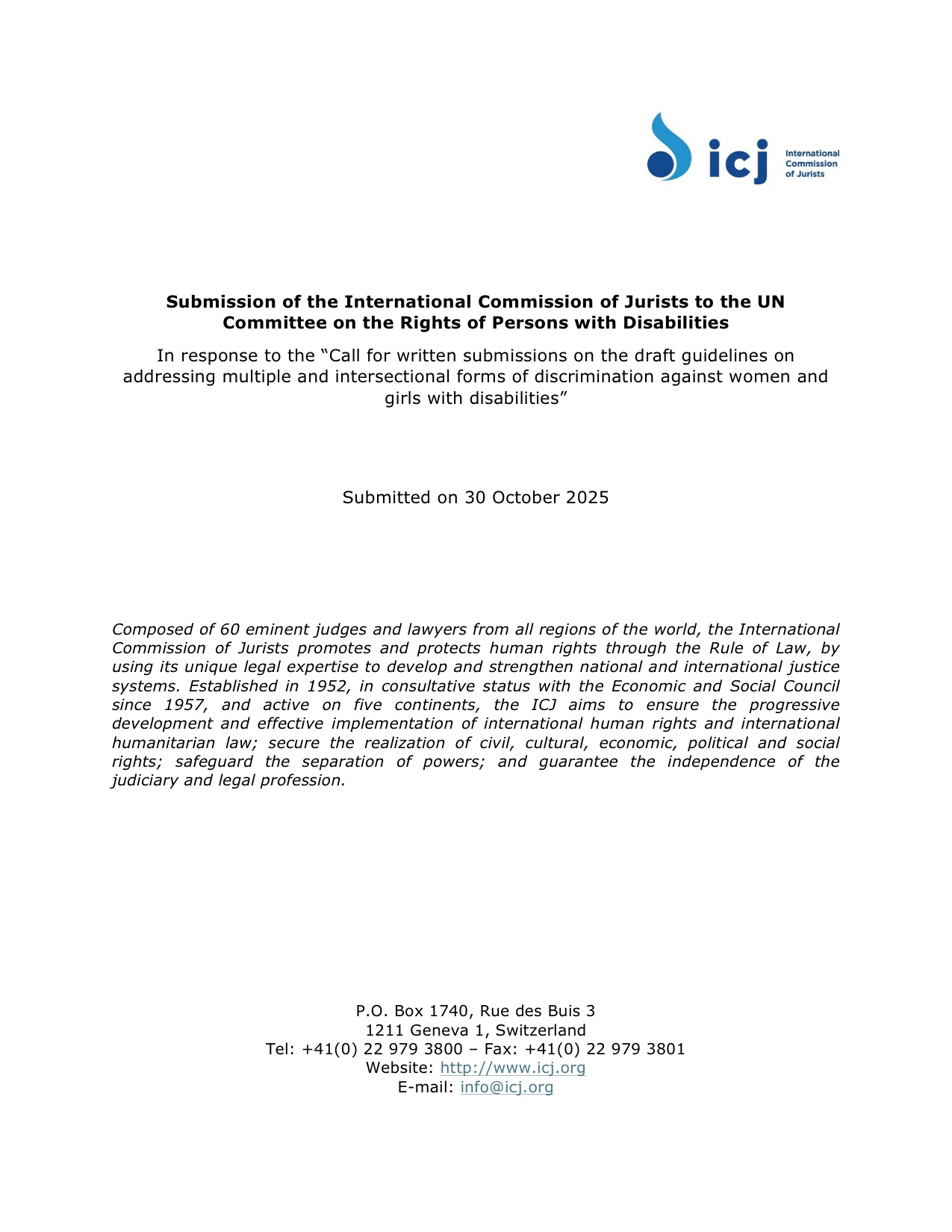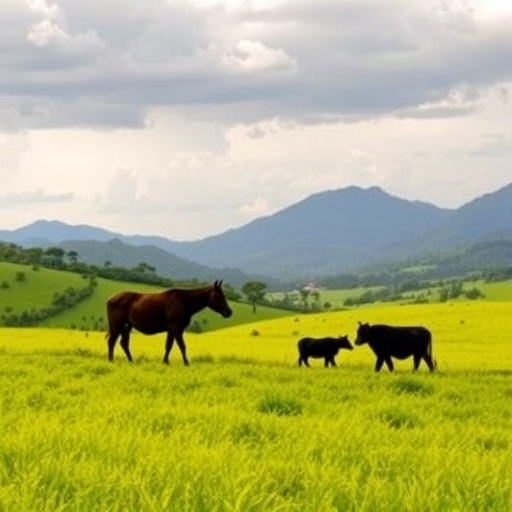What were the Spatial-temporal distributions of agricultural water resource efficiency in China – Frontiers

Report on Agricultural Water Resource Utilization Efficiency in China (2007-2021)
Introduction and Alignment with Sustainable Development Goals (SDGs)
This report analyzes the utilization efficiency of agricultural water resources across 31 provinces in China from 2007 to 2021. Improving water efficiency is a critical strategy for addressing water scarcity and directly supports the achievement of several United Nations Sustainable Development Goals (SDGs). This analysis places significant emphasis on the implications of water use efficiency for SDG 6 (Clean Water and Sanitation), SDG 2 (Zero Hunger), and SDG 10 (Reduced Inequalities).
Methodology
Integrated Analytical Framework
The study employs a novel DPSIRM-SBM (Driver-Pressure-State-Impact-Response-Management and Slacks-Based Measure) model. This integrated approach is uniquely designed to measure agricultural water resource utilization efficiency by incorporating the critical factor of water resource pollution severity, specifically the agricultural gray water footprint.
Spatiotemporal Analysis
To investigate the geographic and temporal distribution patterns of water efficiency, the following methods were utilized:
- Moran’s Index: Applied to assess spatial autocorrelation and identify clustering patterns.
- Standard Deviational Ellipse Analysis: Used to map the directional trends and spatial distribution of efficiency levels over time.
Key Findings and Analysis
National Efficiency Trends (2007-2021)
The overall agricultural water resource utilization efficiency in China demonstrated a generally stable development trend, with the efficiency value fluctuating around 0.8. This indicates a consistent but not significantly improving national average, highlighting the need for targeted interventions to advance SDG 6.4, which calls for substantially increasing water-use efficiency across all sectors.
Spatiotemporal Distribution and Regional Imbalances
The analysis revealed significant spatial disparities in water use efficiency, which directly challenges the aims of SDG 10 (Reduced Inequalities). Key characteristics include:
- Non-Agglomerative Distribution: Efficiency levels among provinces and municipalities were largely imbalanced and did not show strong clustering.
- Weak Interregional Effects: The analysis found weak radiation effects, meaning that high-efficiency regions had a limited positive influence on their neighbors.
Agricultural Gray Water Footprint Analysis
The study of the agricultural gray water footprint, a measure of water pollution, is crucial for evaluating progress toward SDG 6.3 (Improve Water Quality). The findings showed:
- A distinct spatial pattern of “high in the west and low in the east,” indicating more severe agricultural water pollution in the western regions.
- The presence of agglomeration effects, suggesting that water pollution issues are concentrated in specific geographic areas.
Regional Performance Analysis and SDG Implications
Comparative Efficiency Across Regions
A clear regional hierarchy in water utilization efficiency was observed, underscoring the regional imbalances that impact sustainable development.
- Eastern Region: Consistently outperformed other regions with the highest efficiency levels.
- Central Region: Exhibited pronounced fluctuations in efficiency, indicating instability in water management practices.
- Western Region: Persistently displayed low efficiency, posing a significant challenge to achieving both SDG 2 (Zero Hunger) through sustainable agriculture and SDG 6 (Clean Water and Sanitation).
Policy Recommendations for Advancing Sustainable Development
Based on the findings, the following strategic actions are recommended to enhance agricultural water efficiency and contribute to the SDGs:
1. Intensify Water Pollution Control to Achieve SDG 6
To meet the targets of SDG 6.3, efforts in controlling agricultural water pollution must be intensified, particularly in the western regions where the gray water footprint is highest.
2. Promote Regional Equity and Partnerships (SDG 10 & SDG 17)
To address the regional disparities highlighted in this report and advance SDG 10, interregional ecological compensation mechanisms should be established. Such partnerships can help break path dependencies in low-efficiency regions and foster more equitable development.
3. Strengthen Sustainable Production Mechanisms (SDG 12)
In line with SDG 12 (Responsible Consumption and Production), the optimizing role of market-based mechanisms in resource allocation must be strengthened. This will encourage more efficient water use and promote sustainable agricultural production patterns across the country.
Analysis of Sustainable Development Goals in the Article
1. Which SDGs are addressed or connected to the issues highlighted in the article?
-
SDG 6: Clean Water and Sanitation
The article’s central theme is “improving the utilization efficiency of agricultural water resources” to tackle “water resource scarcity.” It also directly addresses “water resource pollution severity” and “water pollution control,” which are core components of SDG 6.
-
SDG 2: Zero Hunger
The study focuses on water use in the agricultural sector. Efficient water use is fundamental to sustainable agriculture, which is a key aspect of SDG 2, aimed at ending hunger, achieving food security, and promoting sustainable agriculture.
-
SDG 12: Responsible Consumption and Production
This goal calls for the sustainable management and efficient use of natural resources. The article’s investigation into “agricultural water resource utilization efficiency” and its recommendation to strengthen “the optimizing role of market-based mechanisms in resource allocation” directly align with achieving sustainable production patterns.
2. What specific targets under those SDGs can be identified based on the article’s content?
-
Target 6.3: Improve water quality by reducing pollution
The article directly relates to this target by analyzing “water resource pollution severity” and measuring the “agricultural gray water footprint,” which it describes as a pollution indicator. It recommends “intensifying efforts in water pollution control” as a necessary action.
-
Target 6.4: Substantially increase water-use efficiency across all sectors
This is the primary focus of the article. The entire study is designed to “measure and analyze the agricultural water resource utilization efficiency” to address “water resource scarcity.” The findings report on this efficiency level across China’s provinces.
-
Target 2.4: Ensure sustainable food production systems and implement resilient agricultural practices
Improving “agricultural water resource utilization efficiency” is a critical component of creating sustainable food production systems. The article’s analysis contributes to understanding how to make agricultural practices more resilient and less resource-intensive, which is the goal of this target.
-
Target 12.2: Achieve the sustainable management and efficient use of natural resources
The article’s core subject, the “utilization efficiency of agricultural water resources,” is a direct measure of the efficient use of a key natural resource, as called for by this target.
3. Are there any indicators mentioned or implied in the article that can be used to measure progress towards the identified targets?
-
Indicator: Agricultural water resource utilization efficiency
The article explicitly constructs a model to measure this. It is used to track progress towards Target 6.4 (water-use efficiency) and Target 12.2 (efficient use of natural resources). The study provides a quantitative value, stating that the efficiency “fluctuated around 0.8” from 2007 to 2021.
-
Indicator: Agricultural gray water footprint
This is used in the article as a measure of water pollution from agricultural sources. It serves as a direct indicator for Target 6.3 (improve water quality). The article analyzes its spatial distribution, noting a pattern of “high in the west and low in the east.”
SDGs, Targets, and Indicators Summary
| SDGs | Targets | Indicators |
|---|---|---|
| SDG 6: Clean Water and Sanitation | 6.3: By 2030, improve water quality by reducing pollution. | Agricultural gray water footprint. |
| SDG 6: Clean Water and Sanitation | 6.4: By 2030, substantially increase water-use efficiency across all sectors. | Agricultural water resource utilization efficiency. |
| SDG 2: Zero Hunger | 2.4: By 2030, ensure sustainable food production systems and implement resilient agricultural practices. | Agricultural water resource utilization efficiency. |
| SDG 12: Responsible Consumption and Production | 12.2: By 2030, achieve the sustainable management and efficient use of natural resources. | Agricultural water resource utilization efficiency. |
Source: frontiersin.org

What is Your Reaction?
 Like
0
Like
0
 Dislike
0
Dislike
0
 Love
0
Love
0
 Funny
0
Funny
0
 Angry
0
Angry
0
 Sad
0
Sad
0
 Wow
0
Wow
0


















-1920w.png?#)






















;Resize=805#)





































